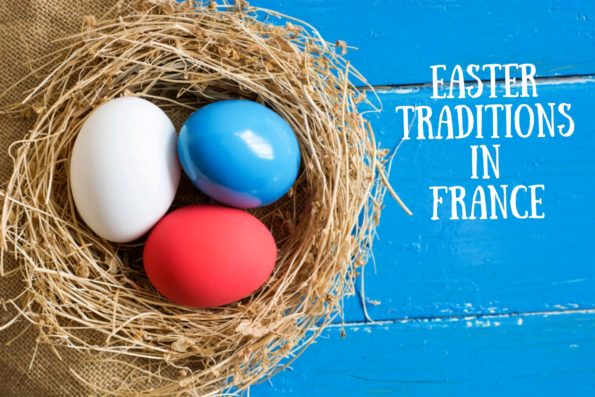
Pâques: derives from the Latin “pascha”, meaning “Passover”
In France children are told that church bells bring them their Easter eggs.
In a sign of mourning, church bells fall silent between Maundy Thursday (the Last Supper) and Easter Sunday (the resurrection).
Then according to legend, the bells go to Rome to be blessed and then scatter the eggs around the homes and gardens of France, when they return.
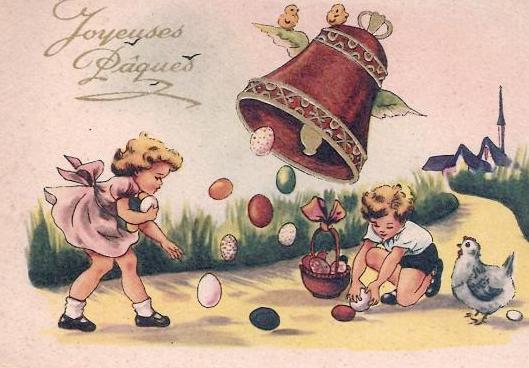
The return of the bells has given rise to another tradition: the Easter egg hunt.
Over Easter, in the grounds of the Chateaux Vaux Vicomte just outside of Paris, the largest egg hunt in France takes place. When tens of thousands of eggs are to be found by both kids and their parents.
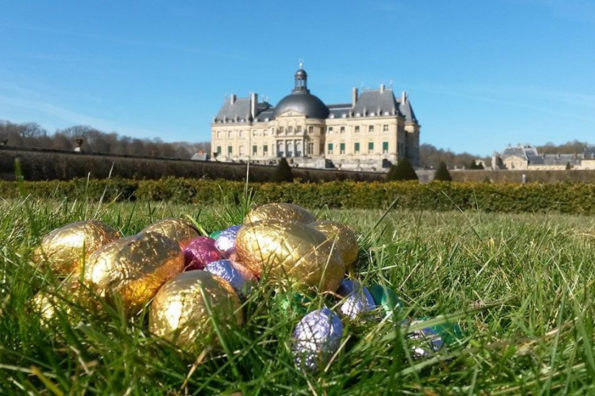
The contest of rolling raw eggs down a gentle slope is an old custom followed in France.
The rules state: the surviving egg was the victory egg and symbolised the stone being rolled away from the tomb of the Christ.
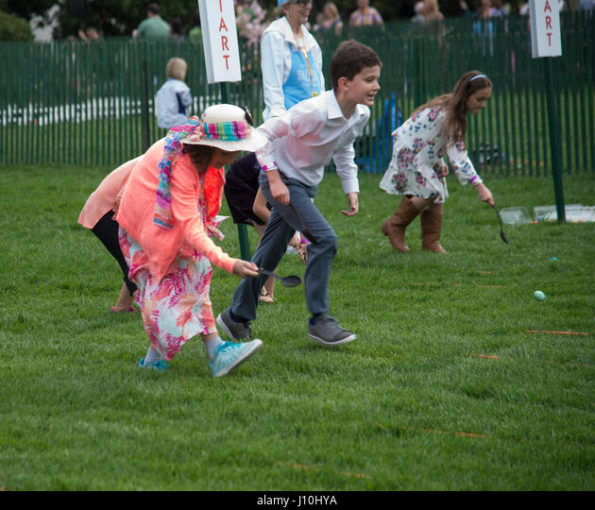
In France, offering eggs as Easter gifts began in the 4th century A.D. Church law dictated that Christians must abstain from eating meat or eggs during the 40 days of Lent. On Easter Sunday, surplus eggs from hens that continued laying during the period were used to make an omelette
In Bessieres near Toulouse, every year on Easter Monday they prepare a giant Omlette in recognition of when Napoleon Bonaparte and his army stayed overnight near the town
After enjoying an omelette prepared by a local innkeeper he ordered the townspeople to gather all the eggs in the village and to prepare a huge omelette for his army the next day.
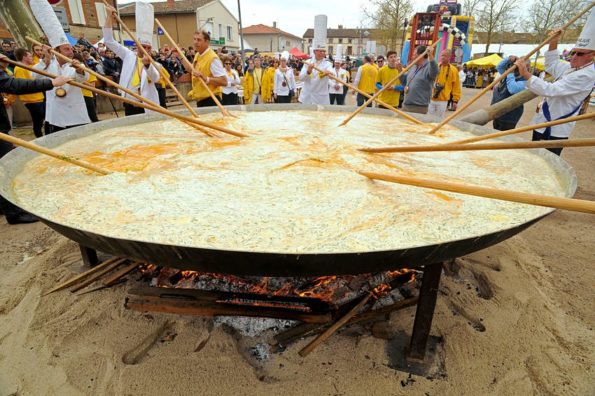
Easter is France’s second biggest family holiday after Christmas. It is much anticipated because schoolchildren have two weeks of holiday at this time of year, often spent with their grandparents,(another French tradition). Everyone gathers on Easter Sunday for the highlight: The family meal.
So, what’s being served? Champagne and amuse-bouches are often eaten first as the aperitif, while everyone gathers before sitting down at the table.
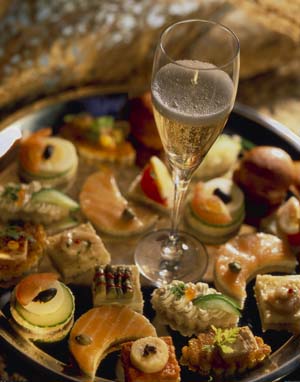
As it’s springtime, asparagus is often served as a first course
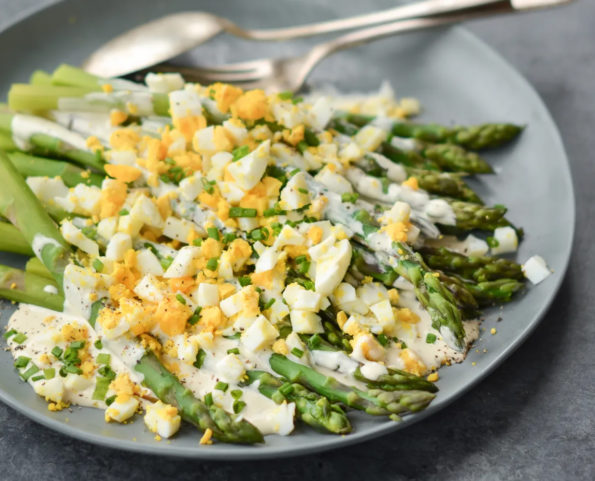
Lamb is typically served as the main course
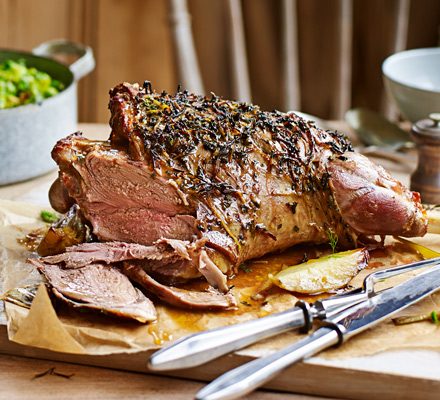
Salad and cheese are the third course. Typically, at a festive meal, there will be at least four cheeses to choose from: a blue Roquefort, a goat’s cheese, a semi-firm, cow’s milk cheese like tomme, and a softer, richer option Camembert or Brie.
Dessert is varied. The French often make an edible ‘nest’, which is simultaneously a decoration and dessert–shaped in puff pastry in the form of a nest, and stuffed with edible chocolate eggs. Always a hit with the kids.
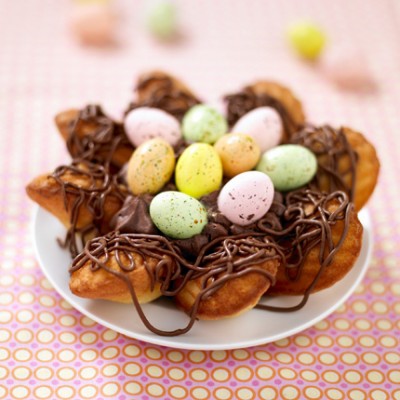
Each region will have its specialties too: the ‘lamala‘ (baby lamb) cake from Alsace, made in a special pottery cake mold only used at this time of year.
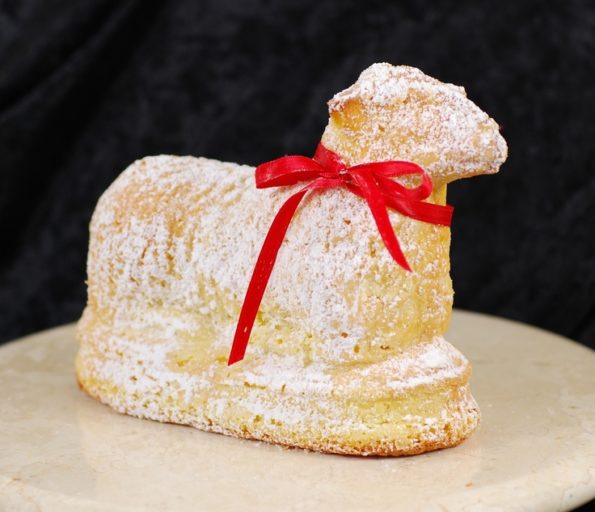
Eating a meal like this usually takes a few hours; the French eat slowly, pausing between courses, telling stories, enjoying one another’s company. I enjoy these long, leisurely meals at the table.
..and remember: If on Easter Day, the first thing you eat is an egg that was laid on Good Friday, then, you will be protected from illness until the following Easter.
Happy Easter and Bon Appétit!
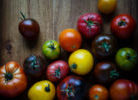
Leave a Comment